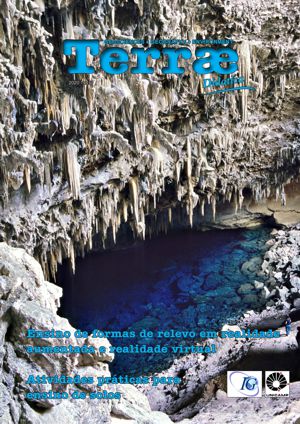Abstract
The theoretical foundations of the relationships between force, stress and deformation, and also on the nature and propagation of waves are briefly developed. Simple experiences, which are carried out with common low-cost materials, but which serve to carry out didactically appropriate practical activities, have been intentionally selected. The models are analyzed from the perspective of their scope, their different levels of depth and, above all, their limitations, taking into account that this is the least approached subject in usual analyzes, no matter it may induce misconceptions or oversimplification among students. This study opens new perspectives in the use of traditional teaching experiences on earthquakes by incorporating a new dimension: the analysis of the models, their results and the associated technical concepts, what is considered to be key for the students' understanding of the methods of action and reflection used in scientific research.
References
González, M. & Juan, X. (2008). Aula Virtual: Herramientas de Comunicación. La gestión de los riesgos naturales: Recursos en la red. Enseñanza de las Ciencias de la Tierra, 16 (1): 99-106, Disponível em: https://www.raco.cat/index.php/ECT/article/view/120992/166507. Acceso em: 17-06-2020.
González, M, Alfaro, P. & Brusi, D. (2010). Recursos para trabajar los terremotos “mediáticos” en el aula. XVI Simposio Enseñanza de la Geología (Teruel), Actas, 137-152
Morcillo Ortega, J.G., García García, E., López García, M. & Mejías Tirado, N.E. (2006). Los terremotos: Un laboratorio virtual. Su utilización con alumnos de la F. de Educación. XIV Simposio sobre Enseñanza de la Geología (Aveiro), Actas, 355-360
Pantosti, D. (2010). El terremoto esperado pero impredecible. Enseñanza de las Ciencias de la Tierra. 18 (3): 333-33. Disponível em : https://www.raco.cat/index.php/ECT/article/view/233848/327339. Acceso em: 17-06-2020.
Peláez, J. A., del Pozo, G. & García, A. J., 2018. La “máquina” o “generador” de terremotos en un laboratorio universitario. Enseñanza de las Ciencias de la Tierra, 26 (2): 186-196, Disponível em: https://www.raco.cat/index.php/ECT/article/view/338611/429563. Acceso em: 17-06-2020.
Sellés-Martínez, J. (2005). ¿Qué nos cuentan las ondas sísmicas? Enseñanza de las Ciencias de la Tierra. 13 (1): 20-36. Disponível em: https://www.raco.cat/index.php/ECT/article/view/89020/133472%20. Acceso em: 17-06-2020.
Sellés-Martínez, J. & Bonán, L. (2000). Problemas de enseñanza-aprendizaje del tema mecanismos focales. Enseñanza de las Ciencias de la Tierra, 8 (1): 54-61. Disponível em: https://www.raco.cat/index.php/ECT/article/view/88654/132728. Acceso em: 17-06-2020.

This work is licensed under a Creative Commons Attribution-NonCommercial 4.0 International License.
Copyright (c) 2020 Terrae Didatica


